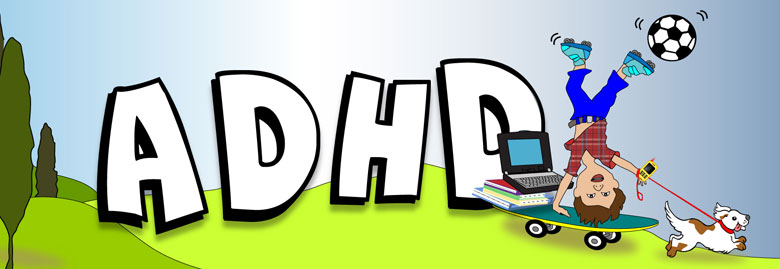Originally published in The Dyslexic Reader,
Vol 26,Issue 1 Copyright (c) 2002-year DDAI.
Disorientation and Dyslexic Perception
Ron Davis with the original spirals
he used in his 1982 experiment.
By Ronald D. Davis
Over the years, many people have asked about Ron’s early research. Following is a description of an experiment he conducted in 1982 to prove to himself that disoriented perceptions are a natural function of the brain. The understanding of how the use of a natural brain function not only produces the symptoms of dyslexia, but also the many talents dyslexic thinkers can exhibit. Serves as one of the foundations of Davis Dyslexia Correction®. It explains the tools which allow dyslexic thinkers to intentionally control the distorted perceptions that are a product of disorientation – to both eliminate a learning disability and to enhance their talents.
In 1982, after my colleagues and I had arrived at a basic, rudimentary understanding of what had to be done to correct dyslexia, we offered a program for doing so to the public. The program was producing spectacular results, and we gathered a great deal of empirical evidence to support it. But the program and I were being criticized and ridiculed by the established authorities on dyslexia. This was because the developmental model for dyslexia was such a major departure form the structural model (brain damage or malfunction) that was accepted at the time. In addition, I lacked any formal training or credential in the field, so I was quickly branded a kook or snake oil salesman.
I searched in vain for anything that would support the concept that distortion in perception was at the root of dyslexia symptoms. I couldn’t even find a simple explanation of perceptual distortion, why it happened, how it happened, or what it was called.
My primary motivation was to establish that dyslexia was not the result of brain damage or malfunction. I wanted to find a way to prove that all of the symptoms of dyslexia could be produced by a normal brain functioning naturally. I felt that if I could make a link between the percept distortions, which even non-dyslexics experience, and dyslexia symptoms, it would prove that the symptoms of dyslexia were not evidence of brain damage or malfunction. I didn’t know where to begin.
Then one day I was driving into the office. We had just had about two weeks of cold, gray, rainy weather. That morning it was warm, bright, and sunny. I wanted to play hooky from work and go for a drive in the redwood forest. I was stopped at a stoplight, with my mind already in the redwoods, when suddenly I felt that I was going to bump into the car in front of me. I naturally pushed harder and harder on the brake, but I wasn’t stopping. Suddenly, I realized, it’s not me moving, it’s the other car rolling backward towards me! A toot of my horn prevented a bump, but my mind began to race. This firsthand experience of the phenomenon (distorted sensory perceptions) I had been talking about for months caused a shift in my perspective. If I could reproduce this same effect in a controlled situation, I might be able to prove my theory.
That day I set up an experiment. The equipment was an old 33-1/2 speed record player, standing on its side. Attached to the turn table was a large cardboard disk with a spiral painted on it. Wit a foot switch so the device could be turned on and off without using a hand, a stop watch, a tape recorder, and a clipboard, I was ready to explore perceptual distortion. I was the first test subject. I sat in front of the disk looking at the center of the spiral. A press of my foot, and the disk began to spin. In less than five seconds, I felt the motion. The speed of the disk was so fast that the sense of motion was like flying down an endless tunnel.
The goal of the experiment was to produce dyslexia symptoms in a dyslexic brain. But before that could be established, the equipment had to produce dyslexic symptoms in a dyslexic brain. Based on the developmental model, the symptoms of dyslexia came from distortions in the senses. The senses most affected were vision, hearing, balance, motion and time.
The first thing I noticed performing the experiment on myself was that just before the feeling of movement began, the speed of the spinning disk appeared to slow down. This indicated that not only was my sense of motion distorting, but also my sense of vision.
The second phase of the experiment was to stand in front of the disk balancing on one foot, turn the disk on, and try to maintain balance. I don’t recommend doing this without an assistant to turn the disk on for you and, more importantly, to catch you when you begin to fall – because you will fall over backwards. The spinning spiral definitely distorted the sense of balance.
The third phase was to sit in front of the stationary disk with a stopwatch in hand. While looking at the center of the spiral, I tried to estimate the passage of fifteen seconds by clicking the stopwatch on, and when I thought fifteen seconds had elapsed, I clicked it of. In five attempts I was never more than three seconds off. The next part was to start the disk spinning, and try the same thing. In five attempts I never got closer than five seconds, and twice I was more than ten seconds off. My sense of tie was definitely distorting.
The fourth phase was to turn on the tape recorder, spin the disk, and after the feeling of motion began, have an assistant say something to me, and repeat back what I heard. We used nursery rhymes like, “Sally sells sea shells at the sea shore.” Only the assistant would deliberately alter the words, like, “Sally tells sea snails at the sea shore.” Or, “Sally sells seashore to seahorses.” I could not hear exactly what the assistant said, and the proof was on the tape.
So with les than $100 of equipment, I demonstrated for myself that my brain distorted the senses of vision, hearing, balance, motion, and time. The experiment produced dyslexic symptoms in a dyslexic brain. Now I was ready to try the same thing on a non-dyslexic brain. I decided to put one hundred people through the steps of the experiment. I wouldn’t even attempt to pre-determine whether or not they wee dyslexic. I wanted a cross section of the population.
I started doing the experiment with anyone who was willing to sit in front of the spinning disk. I soon discovered that I needed another piece of equipment – a plastic –lined waste can. I also discovered that I needed to change the protocol. At first, I let others observe someone going through the experiment. Their observations influenced their own experience. So observation was permitted only after having had the experience.
Some people were made too nauseous by the spinning disk to complete all four phases of the experiment. But there was perceptual distortion in the phases they did complete. And everyone who completed the series experienced distorted vision, hearing, balance, motion, and time. Age, intelligence, education, gender, race, etc. didn’t matter – the results were consistent.
Then one evening a young woman, the forty-eighth test subject, was sitting in front of the spinning disk. She sat there on the verge of vomiting for about three minutes, then fell to the floor and had a grand mal seizure. The unexpected event scared me; it terrified her. She had never had a seizure before, and I had never seen one that up close and personal. I felt responsible for making it happen.
I had satisfied my own curiosity. I had nearly fifty test results, all of which confirmed my theory. After all, I didn’t have a graduate degree hanging in the balance. I concluded that I had proven my point, so the hundred person experiment ended at only forty-eight.
(Editor’s note: Do not try this experiment on your own. As this account shows, the spinning-disk can induce epileptic seizures in susceptible individuals. So it is not safe or appropriate to conduct such experiments outside of carefully controlled and monitored laboratory conditions.)
Att design: the following are two charts, both are to be reshetted; the first to be placed within the text and the second after the text.
Learning Disability Symptoms Which Can Stem from Perceptual Disorientation
There are literally thousands of learning disability symptoms that can result from disorientation. The severity and degree to which each of the senses are affected varies from person to person, and from one time to another. The following are some common symptoms of disorientation categorized with the sensory perception that is most affected:
Vision:
■ Changes or reverses shapes and sequences of letters of numbers.
■ Incorrect / inconsistent spelling.
■ Sees letters and numbers move, disappear, grow, or shrink.
■ Omits or alters letters, words, and lines while reading or writing.
■ Omits or ignores punctuation and capitalization.
Hearing:
■ Difficulty making speech sounds.
■ Perceives sounds or words not heard or experienced by others.
■ Accused of not listening or being inattentive.
■ Hears sounds softer, louder, nearer or further away than they actually are.
Balance / Movement:
■ Dizziness or nausea while reading.
■ Poor sense of direction
■ Inability to sit still.
■ Difficulty with handwriting (dysgraphia).
■ Balance / coordination problems.
Time:
■ Hyperactive (over-active).
■ Hypoactive (under-active).
■ Inability to learn math (dyscalculia).
■ Difficulty telling time or being on time.
■ Trouble with sequencing or keeping things in order.
Talents Which Can be Enhanced by Disoriented Perceptions
■ spatial awareness
■ strategic planning
■ mechanical arts
■ drama / role playing
■ music
■ inventing
■ designing
■ fine arts
■ building
■ athletics
■ piloting vehicles
■ engineering
■ storytelling
Thus, the goal of Davis Orientation Counseling is not the elimination of disorientation, but the ability to consciously control it when it acts as a barrier to reading, writing, doing arithmetic, or succeeding in a traditional educational setting.






